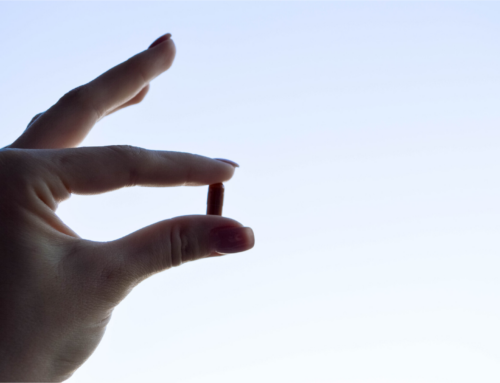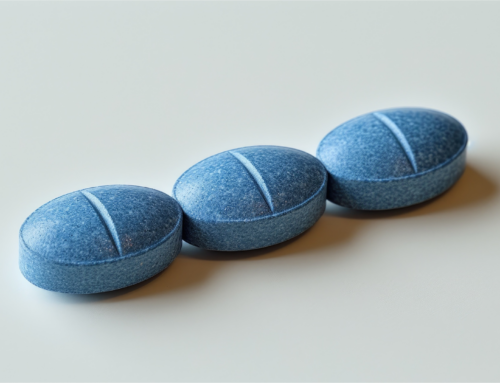There has been massive hype surrounding Ozempic, the injection that was first used to treat type II diabetes but has since become a weight loss sensation. Ozempic and Wegovy are both injections that contain semaglutide, but did you know there is a tablet form called Rybelsus? So, why are Ozempic and Wegovy so popular when used as weight loss treatments, but relatively fewer people have heard of Rybelsus?
What is Rybelsus?
Rybelsus is the oral form of the once-weekly injection, Ozempic. People taking Ozempic have to inject themselves once a week, while those taking Rybelsus have to take one tablet daily.
Ozempic and Rybelsus are made by Novo Nordisk, the same manufacturer, and contain the same active ingredient, semaglutide.
What is Semaglutide?
The main ingredient in Rybelsus and Ozempic is semaglutide, a GLP-1 receptor agonist. This family of drugs mimic the effects of a hormone that both stimulates insulin and decreases the feeling of hunger.
Originally, semaglutide was developed to treat type II diabetes, but subsequently, it was found to be the greatest-ever weight loss drug. The story is similar to the development of Viagra, which was initially developed to treat pulmonary arterial hypertension but was discovered to treat symptoms of erectile dysfunction. Such is the serendipitous nature of drug discovery!
Users of semaglutide find that they can shed weight relatively effortlessly. This is because the semaglutide makes them feel less hungry, so they consume fewer calories.
Although Ozempic is used for weight loss, its primary licensed use is treating type II diabetes. The massive demand for the drug has led to shortages, which led to the development of Wegovy, a semaglutide injection that can be used to lose weight for people without type II diabetes.
At present, Rybelsus is the only oral form of semaglutide. It has been demonstrated to cause weight loss and improvements in blood sugars when used alone or in combination with other diabetic drugs.
Is Rybelsus as Effective as Ozempic?
Studies have demonstrated that Rybelsus is just as effective as Ozempic; however, higher doses must be given to achieve similar results. Whenever we take a capsule or a pill, the medicine has to pass from the digestive tract, through the liver, and finally into the blood, so not all the drugs reach the bloodstream.
Studies have been carried out to test the equivalent doses, and they have found that the maximum 14mg dose of Rybelsus is equivalent to the 0.5mg weekly dose of Ozempic. Hence, when a switch from injection is required, if someone is taking Ozempic 0.5mg weekly, this would correspond to a daily dose of 14mg Rybelsus.
How Effective is Rybelsus?
A study called the PIONEER 2 trial looked at its effectiveness in treating type II diabetes in people who took the antidiabetic metformin. The study found that after six months on the maximum dose, the trial participants found their average HBA1c levels reduced by 1.3%, and after one year, they lost 10 pounds.
A similar study, the SUSTAIN2 trial, carried out a similar study in a similar cohort of diabetics who were either taking metformin or a different class of antidiabetics called TZD. However, this time, the study focused on Ozempic rather than Rybelsus. The study found that the Ozempic produced an HBA1c reduction of 1.3% and a weight loss of 9.5 pounds.
Hence, the results of the PIONEER 2 and SUSTAIN 2 trials produced very similar outcomes, suggesting that these two drugs are equally effective.
However, Ozempic is also available in more potent doses. When Ozempic is used at the maximum dose of 2mg, it produced a reduction of HBA1c levels in type II diabetics who were taking metformin 2.2%, and the participants lost 15 pounds of weight. Wegovy is available at even higher doses of 2.4mg, and at present, Rybelsus is not available in these higher strengths and, to date, has not been tested as a weight loss drug for people who don’t have type II diabetes.
How to Take Rybelsus
Another potential reason that Rybelsus has not taken off is that it is a bit of a pain to take the drug. Let me explain. According to the FDA, you must take Rybelsus on an empty stomach every morning for 30 minutes before eating, drinking or taking any other medicines. You are only recommended to drink 4 ounces of plain water now. If you have your breakfast too early, this will impact the effectiveness of the Rybelsus. So, it is advised to wait longer than 30 minutes after taking the Rybelsus to start eating for best results. This delay in eating will enhance the absorption of Rybelsus.
In contrast, the dosing regimen for Ozempic is far less demanding. It involves one weekly injection that can be taken at any time of the day, with or without meals.
Is a Higher Dose of Rybelsus on the Way?
Even though higher doses for Rybelsus are not currently available unless you use a compounding pharmacy, Novo Nordisk is currently pushing for approval for these higher doses.
The PIONEER PLUS trial looked at larger doses of semaglutide, 25mg and 50mg daily, to confirm that these higher doses will be effective. The trial ran for 68 weeks and was tested on over 1,000 participants with type II diabetes.
The results found that the 14mg tablet produced a 1.5% reduction in HBA1c and a 9.9 lb weight loss. The 25mg tablet produced a 2.2% reduction in HBA1c and a 15.4 lb weight loss. Finally, the 50mg tablet also produced a 2.2% reduction in HBA1c but a massive 20.3lb weight loss. Hence, the 50mg tablet would be on par with the current maximum dose of 2.0mg in Ozempic.
Rybelsus and Side Effects
One of the main side effects that people experience when taking Rybelsus is gastrointestinal issues such as nausea, vomiting, or diarrhoea. However, these side effects begin to subside once the body gets accustomed to the drug. However, for others, these effects prove to be too much for them, and they are unable to continue the drug.
This is another benefit that compounding can play an active role. As we have mentioned, the Rybelsus has to be absorbed across the digestive tract, and when it is in contact with the intestines, it can cause these side effects. However, by formulating the Rybelsus in an oral adhesive buccal formulation, you effectively bypass the gut and eliminate these side effects. So, for this reason, if you cannot take Rybelsus due to the gastrointestinal side effects, talk to us at APC labs to see if we can formulate a suitable preparation for you.
However, sometimes, side effects still occur even when compounded in a form that bypasses the gut since Ozempic has similar effects. The side effect profiles of both Rybelsus and Ozempic were compared and found to be identical at equivalent doses.
Rybelsus has a pretty similar side-effect profile. Here’s the number of people who experience intestinal troubles, according to the data that the FDA lists on its official labels for the two drugs at equivalent doses:
Side Effect: Nausea
Ozempic: 20%
Rybelsus: 20%
Side Effect: Abdominal Pain
Ozempic: 7%
Rybelsus: 11%
Side Effect: Diarrhoea
Ozempic: 9%
Rybelsus: 10%
Side Effect: Vomiting
Ozempic: 5%
Rybelsus: 8%
Side Effect: Constipation
Ozempic: 5%
Rybelsus: 5%
The PIONEER PLUS trial also found that the gastrointestinal side effects were more familiar with larger doses.
As with all medications, there are also some more severe side effects you should watch out for, such as pancreatitis. Some people should not take Rybelsus, so it is important to always discuss it with your doctor before starting It.
Summary
- Rybelsus is semaglutide in oral form.
- Rybelsus is relatively more complicated to take than the weekly injection, i.e., a daily dose on an empty stomach
- Rybelsus has less powerful doses than Ozempic, but compounding can solve this.
- Rybelsus is an excellent option for needle-phobic people.
- Rybelsus is an effective therapy for improving glycaemic control and weight loss.
Compounded Semaglutide
At APC Labs, we pride ourselves on being pioneers in the field of compounding pharmacy. We are the first and only compounding pharmacy in the UK to offer transmucosal semaglutide formulations. This is where compounding can have a significant effect. We can compound a semaglutide formulation absorbed via the buccal mucosa, avoiding absorption through the gastrointestinal tract. As a result, a more substantial portion of the medication is absorbed directly into the bloodstream, reducing loss and reducing gastrointestinal side effects. Consequently, the dosage can be customised for each person. These are just a few advantages of selecting a compounding pharmacy; it offers you the flexibility to optimise your medications. If you are interested, please get in touch with APC Labs for more information.
References:
Aroda, V.R., Aberle, J., Bardtrum, L., Christiansen, E., Knop, F.K., Gabery, S., Pedersen, S.D. and Buse, J.B., 2023. Efficacy and safety of once-daily oral semaglutide 25 mg and 50 mg compared with 14 mg in adults with type 2 diabetes (PIONEER PLUS): a multicentre, randomised, phase 3b trial. The Lancet, 402(10403), pp.693-704.
Aroda, V.R., Ahmann, A., Cariou, B., Chow, F., Davies, M.J., Jódar, E., Mehta, R., Woo, V. and Lingvay, I., 2019. Comparative efficacy, safety, and cardiovascular outcomes with once-weekly subcutaneous semaglutide in treating type 2 diabetes: insights from the SUSTAIN 1–7 trials. Diabetes & metabolism, 45(5), pp.409-418.
Zinman, B., Bhosekar, V., Busch, R., Holst, I., Ludvik, B., Thielke, D., Thrasher, J., Woo, V. and Philis-Tsimikas, A., 2019. Semaglutide once weekly as an add-on to SGLT-2 inhibitor therapy in type 2 diabetes (SUSTAIN 9): a randomised, placebo-controlled trial. The Lancet Diabetes & endocrinology, 7(5), pp.356-367.

Written by Mr. Shazlee Ashan
BSc Pharmacy, MSc Endocrinology, PgDip Infectious Diseases, Ipresc




